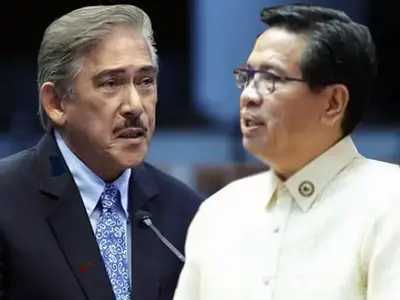
THE House Committee on Appropriations, chaired by Nueva Ecija Rep. Mikaela Angela Suansing, on Thursday ended its deliberations on the proposed P320.5-billion budget of the Department of Health (DOH) for Fiscal Year 2026.
The proposed budget is the third largest allocation among government agencies in the National Expenditure Program (NEP).
Senior Vice Chairperson and Bataan Rep. Albert Garcia said the health sector remains a vital foundation for national development. “The health sector remains a cornerstone of our nation’s socio-economic growth. A healthy population drives productivity, sustains livelihoods and builds a resilient economy,” he said.
Garcia noted that key initiatives include P53.3 billion for the national health insurance program, P24.2 billion for medical assistance to indigent patients, P1.3 billion for the cancer assistance fund, P14.5 billion for the Health Facilities Enhancement Program (HFEP), P1.1 billion for Bagong Urgent Care and Ambulatory Service Centers (BUCAS) and P23.4 billion for the national health workers support system.
Health Secretary Dr. Teodoro Herbosa said the proposal reflects the agency’s commitment to universal healthcare and the Philippine Development Plan (PDP), and will be instrumental in the pursuit of three primary goals: better health outcomes, stronger health systems and quality access to all levels of care.
“The DOH will advance key directives ensuring zero balance billing to patients in all basic accommodation in all DOH hospitals, expanding BUCAS centers to bring urgent and ambulatory care closer to the communities, scaling of the National Immunization Program, and promoting active lifestyles by working with LGUs to encourage community wide health activities,” he said.
Herbosa also cited special programs, including P8.7 billion for the Health System Resiliency Project, P7.7 billion for disease control, P3.3 billion for prevention and capacity building, P2.7 billion for non-communicable disease treatment, and P2.5 billion for health promotion, or 1 percent of the DOH budget as required by law.
He further noted that the budget aims to safeguard mothers, infants and children from preventable diseases, malnutrition, stunting, and maternal complications while strengthening protection for families and communities nationwide.
The committee also discussed the P478-million research fund allocation and Herbosa’s USD10-million pledge to the World Health Organization (WHO) Regional Secretariat, which Deputy Speaker Janette Garin questioned, saying the funds — equivalent to P570-million — would be better used to support public hospitals and universal healthcare.
Herbosa clarified that the actual proposed grant was only USD2.4-million spread over four years and was earmarked for Filipino health workers assigned to WHO, though it could also be channeled to vaccination programs.
Garin, however, maintained that the funds would be better spent on hiring doctors, nurses and health workers directly, especially with the decline in funding for the HFEP under the NEP.
She stressed the need to prioritize institutions, such as the National Kidney and Transplant Institute, Philippine Heart Center and Philippine Children’s Medical Center, as well as additional BUCAS centers to ensure hospitals can fully implement zero balance billing.
“Why don’t we infuse the budget of the regional hospitals para talagang todong mabigyan na sila ng zero balance billing? We cannot just rely on PhilHealth, we need the DOH to help us,” she said.
At the proper time, Garin stated she would propose to realign P3.6-billion to direct patient care, divert the WHO grant to patient services or PhilHealth subsidy, and reexamine the P478-million research fund.



